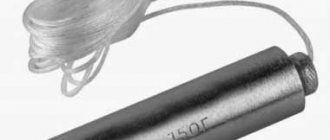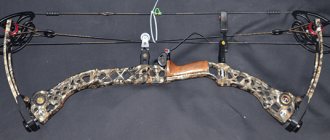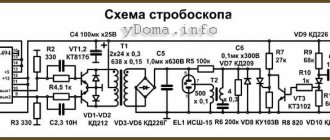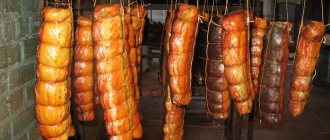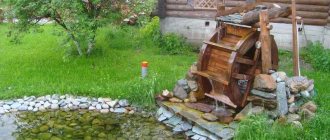It is not pleasant that cold air penetrates into a warm room, cooling it, because in this case it turns out that the street is heated. Not only does this create uncomfortable conditions, but it also has a noticeable impact on your health and wallet. This problem can be overcome with the help of a thermal curtain, which is a reliable barrier between indoor and outdoor air.
They differ in the heat source, that is, such equipment can be electric or water. A water thermal curtain is economical to use, since the heating element is hot water. However, this type of device, like the other, has excellent advantages, due to which it is becoming increasingly popular:
- Protecting the building from heat loss.
- Protection from cold air, which, thanks to the curtain, cannot penetrate into the room.
- Creating a barrier that prevents exhaust gases, dust and insects from entering from the street.
- Leveling the temperature gradient.
- Protection from drafts, which has a positive effect on health.
- Additional heating of the room.
- Ability to keep the door open.
- The ability to create coolness in hot weather.
- Cost-effectiveness due to both less heat loss and the fact that the energy source is not electricity, but water.
Operating principle and installation
The principle of operation is quite simple: a powerful fan creates a high-speed air flow, which forms an “invisible barrier”; thanks to such a system, warm air cannot leave the room, and cold air cannot enter it. The heat source of the water curtain is hot water.
It turns out that for the water type of device to work, central heating is needed.
Installing such equipment, of course, is difficult, but this cannot be compared with the fact that the operating costs are low and the power is very high. The scope of application of water curtains mostly extends to industrial buildings that have large open openings. The device is indispensable in restaurants, shops and warehouses, that is, those in places where doors open very often due to a large flow of people.
Installation is usually done above the door. Installation above the opening means that the curtain is horizontal, and on the side of the opening it is vertical. It must be remembered that the vertical curtain must be at least ¾ of the height of the opening that needs to be protected. This is the only difference between this type of device and the horizontal one.
Features of fan heaters and their scope of application
They are compact heating units that, when turned on, immediately begin to heat the air. Such devices are not suitable for heating large areas, but they are quite capable of heating one living room. All fan heaters have three main components:
- Frame
. It protects the structure and its owners from direct contact with it, so you can’t get burned on it. In addition, the fan itself is protected by a special metal grille, through which heated air is directed into the room. - Fan
. This element pumps air. - Heater
. It can be tubular, spiral or ceramic. There is also a water one, in which the heater is hot water supplied from the heating pipes.
The principle of operation of each of them is similar: cold air from the room is captured by a fan and supplied to a heating element, which heats it and releases it hot outside.
This type of heater has a modest power, but with its small dimensions it can easily cope with heating a small room. When using it, the possibility of fire is absolutely excluded.
Main element
The main design element is a radial fan, which is necessary to create the necessary air flow. Such a turbine must be single and located along the entire length of the device. It helps create an even flow. The engine is mounted on the side of it.
However, manufacturers often decide to place the engine in the center, with small turbines on its sides. The reason for this arrangement of elements is the difficulty of manufacturing a turbine with a length exceeding 800 mm. How effective is this installation method? Of course, such a simplified curtain will cost less, but there will be a “dip” in the central part of the air flow, which significantly reduces the protective properties. In addition, the heating elements will be blown unevenly, and this leads to their earlier failure.
Options for a homemade heating element
Before you start making a homemade fan heater, it is important to choose the right heating element for your device. Let's look at which options are suitable for these purposes.
The following can be used as such a heater:
- metal spiral;
- heating element;
- ceramic device.
You can make a spiral coiled from wire yourself without any problems. This limits the advantages of metal spirals as heaters. When the device operates for a long time, there is too little moisture and oxygen in the surrounding air.
Therefore, the room will have to be ventilated frequently, well ventilated, and also take care of air humidification.
The heating element is a metal pipe containing sand inside, which accumulates heat well and then gradually releases it to the air flow.
Heating elements do not dry the air and do not require oxygen, so they are much safer than coils. The heating element for the fan heater can be removed from an old household appliance, for example, from an electric stove.
We recommend looking at more information about the types of heating elements for heating and the features of choosing the appropriate option in this article.
Ceramic heaters are complex and expensive elements, but extremely safe and effective. They are a complex of plates with an uneven surface, similar to a honeycomb.
Such elements do not heat up too much; the effect of their influence is achieved due to the large area of contact of the heaters with the air.
The likelihood of getting burned on a ceramic heater is much lower than when using a metal coil. But in home-made devices, it is spirals that are most often used, since they are simple and affordable.
How is the water curtain controlled?
The water thermal curtain is accompanied by at least two switches, one of which must turn on the fan, and the other must turn on the heating elements. Heating power regulators that have two or three stages can also be installed. Fans can be two-speed. The air curtain may have a thermostat that turns off the device or heating elements when the set temperature is reached.
There is a built-in and wired control panel, it all depends on the chosen model. However, the built-in type is used on small-sized curtains that are installed for windows and doors. This is explained by the fact that the ability to reach the buttons depends on the distance. Accordingly, for water curtains it is more rational to use remote controls that can be installed in the right place.
Sometimes a limit switch is used, which is convenient because it turns on the device only when the gate is open. It turns out that the switch starts working when the doors or gates are opened. Its use is very convenient in warehouses and hangars.
Cost of paint box
The price of the box will depend on the selected materials, the number of motors, the type of ventilation, and the presence or absence of automation. Typically, the cost of a fully equipped camera is at least 0.5 million rubles.
Custom assembly and installation of all equipment increases the cost, as does maintenance with the involvement of specialists. After completion of installation, it is necessary to register a new type of activity according to OKPD 2 and register with the regulatory authorities.
Main advantages:
Brief characteristics:
Other modifications are possible!
| Height of chamber with fan, mm | 2470 |
| Hood capacity, m3/hour | 8000 |
| Working width, m | 2/2,5/3 |
Curtain selection
The following factors influence the choice of air curtain:
- Device length.
- Power.
- Performance.
- Type of instalation.
- Control method.
We have already discussed the last two factors, now we will talk about the other three.
- Performance. The air flow speed and installation height depend on it. For example, let's take a doorway whose width is about one meter and height is about two meters. In this case, the “pumping” of the curtain should be from 700 to 900 cubic meters per hour. With this performance, the air flow speed will be about 8 meters per second at the outlet of the device, and about 2 meters per second at floor level. Of course, the price of such devices is not small, so devices with lower performance are used to protect small openings. Since water curtains are used more for industrial buildings, you cannot save on this factor, otherwise the efficiency will be minimal.
- Power is also an important factor, given that the equipment can heat the air in the room, although this factor is not at all necessary. For example, let's take a building of 10 square meters, which is not heated, and the ceiling height is about three meters. The power required under such conditions is 1 kW. However, in this case, the building must be permanent, that is, the ceiling and walls must have good thermal insulation. You should not choose a device with high power for well-heated places or even a device without a heating function. It is worth mentioning the peculiarity of the heating function: the air coming out of the curtain will never be hot, even if the power is maximum, it will only be warm. There is an explanation for this: the heating elements have a high blowing speed.
- Length. It can range from 600 to 2000 millimeters. Lengths from 800 to 1000 millimeters are very popular; such devices are installed above a standard opening, so they are not suitable for industrial facilities where water curtains are often used. How to correctly calculate the length in this case? It should be the same as the width of the opening or slightly larger. This is important to ensure that the air flow completely covers the opening and prevents cold air from entering the room.
All this information will help you choose the right water curtain, as it plays an important role in creating comfortable conditions. The installation of such equipment will indicate that caring for people is an integral part of any organization.
How does a water curtain sprayer work?
The task of any paint booth is to ensure that the air in the spray zone is cleared of paint mist and solvent vapors.
Water spray booths have several levels of air purification from paint.
Level 1
- frontal water curtain
- this is the visible part of the spray booth with a water curtain. A stream of water flows down it in a continuous and continuous stream. It must be uniform and completely cover the entire front area (surface) of the curtain.
Level 2
-
internal air purification
- perhaps the main filtration and purification of air from paint waste is carried out here. Depending on the design of the spray booth and the manufacturer, there are various internal air purification systems.
Level 3
—
dry filtration
— carries out final air purification from remaining paint particles and protects the fan blades from paint sticking. Depending on the manufacturer, dry filtration is carried out in Italian paint booths with a water curtain, in Russian paint booths - in others, such as China, there is no filtration at all.
Below are diagrams of the structure of Italian and Russian paint booths:
1) Scheme of a water spray booth ZINCOVELO ZA Italy
2) Video of the work of a spray booth Italy
3) Scheme of a water spray booth made in Russia
4)
Video of the Russia paint booth in operation (built into a clean room, overpressure chamber)
2
The operating principle of a spray booth with a water curtain is as follows.
When spraying the material, a paint mist is formed. The fan, which is installed on the roof of the spray booth, creates a vacuum and draws contaminated air through the opening in the paint booth at the bottom of the front curtain.
Also, particles of paint and dust are deposited on the front front surface, which are captured and carried away in a continuous stream into the bathtub of the paint booth and settle in the water.
Contaminated air, which entered the internal cavity of the painting water chamber with the air flow, is subject to additional cleaning. In Italian painting booths there are several water cascades, in Russian painting booths there is filtration by an irrigation system. The air is purified from spray waste.
Final cleaning - dry filtration installed in front of the fans (or)
Water spray booths can be of various modifications: with a floor, with side walls, without a floor and without walls. The choice of model depends on the painting technology and the product, as well as the requirements for the quality of the coating.
Painting booths perform the function of air extraction and purification.
When creating a painting area, it is very important to ensure the correct microclimate in the spraying area (the desired temperature regime), and also the incoming air must be cleaned of dust and dirt, this allows you to achieve excellent conditions for obtaining high quality coatings.
Spray booth with water curtain mod. W3000 is designed for:
- significant improvement in the quality of paint and varnish coatings;
- significant reduction in maintenance time for painting areas;
- increasing the productivity of painting areas;
- ensuring acceptable sanitary and hygienic working conditions for painters and support staff;
- immediate removal of solvent vapors from the work area in order to prevent the formation of explosive concentrations;
- significantly reducing emissions of paint and varnish sludge into the environment;
- reducing the fire hazard of the paint job.
Areas of use
The W3000 water curtain spray booth is successfully used for painting metal, glass, wood, plastic and products made from them.
The range of painted products is very wide:
- painting wheel rims
- painting of large metal structures
- painting of garden and agricultural equipment
- painting drills
- painting pipes and poles
- painting piles
- painting welded air ducts
- painting formwork
- painting elements of building structures
- painting cement-fiber boards and other building and finishing materials
- painting (varnishing) of electronic boards and components
- painting aircraft parts
- painting elements of boats and boats
- car bumper painting
- restoration of furniture and antiques
- painting furniture
- painting MDF facades
- painting tables
- painting chairs
- window painting
- painting doors
- painting molded products (door moldings, skirting boards)
- painting parquet and floor boards
- painting of other furniture and joinery products
Principle of operation
Some of the paint and varnish material sprayed by the painter does not fall on the product. At the same time, fine dust from the quick-drying components of the varnish is formed in the air - dust, which, thanks to the painting booth, is removed from the working area by an air flow parallel to the floor.
A significant part of the varnish dust is deposited on the water curtain (up to 85%).
Additional filtration systems (optional) - a labyrinth of barrier panels that repeatedly change the direction of air flow, as well as quick-release cassettes with an inexpensive replaceable element - a fiberglass filter - allow achieving a degree of purification from solid particles of up to 99%.
A “side effect” of using water in the filtration system is the absorption of solvents when the chamber begins to operate. After the water is saturated with solvent molecules, the absorption of “odors” stops, and the illusion of their filtration disappears.
Basic equipment
- Prefabricated body and settling tank made of galvanized steel with a large number of longitudinal, transverse and vertical stiffeners.
Provides durability and reduced vibration during operation.
Double cascade of water curtains.
The front curtains of both cascades (those through which water flows) have a quick-release design. Thanks to this, not only is full access to the interior of the chamber for maintenance provided, but it also makes it technically possible to narrow the gap between the lower edge of the curtain and the water in the bathtub located below. For the upper cascade, this is the bath of the lower cascade, and for the lower cascade, this is the settling bath.
This design has a number of advantages, the main ones being:
- due to the absence of long sections of free fall of water, the formation of splashes in both the upper and lower parts of the working area is eliminated;
- water rushing off the lower edge of the water curtain creates a dense flow that additionally cleans the air of suspended particles, which eliminates the need to install water sprinklers;
- the speed of air flow after entering the painting booth is reduced by 4-5 times, which allows suspensions to settle into the settling bath, increasing the degree of purification of the emitted air.
- Attached bath to accommodate the pump>
The location of the bath is universal (to the left or to the right of the camera). In this way, the service side can be selected during installation.
The location of the service area outside the chamber allows for visual control of operation and avoids external contamination of the pump, which leads to its overheating and premature failure.
Valves located outside make it easy to regulate the water flow in the water curtains, as well as to quickly drain water from the chamber using a standard pump during its scheduled maintenance.
A stainless steel pump that pumps lumps of coating sludge with a diameter of up to 35 mm, as well as a built-in overheating protection system.
- A system of circulation water lines, including a water circulation valve, an automatic water drain valve, all necessary hoses, passage units, flanges, clamps and other installation materials
- Mounting kit including bolts, nuts, washers, sealant, etc. according to camera configuration
- Packaging for transportation by road
- Passport and instruction manual
- CD with diagram and photo illustrations of the assembly
Additional options
- Explosion-proof exhaust fan.
- The supply fan and set of filters for the “economy project” include:
- Supply fan of general industrial design. To create excess pressure in the paint sprayer, the capacity of the supply fan is selected to be 10-20% greater than the exhaust fan, taking into account the fact that the resistance of both the pocket filter and the filter of the air distribution device must additionally be overcome.
- A roll of fine filter (20x2 meters) for the buyer to independently sew an air distribution hose.
Explosion-proof design, with an explosion-proof motor (optional - with a general industrial motor or not explosion-proof).
1a
— Fan with a wafer-type supporting body. Thanks to the installation of additional amplifiers through a rubber gasket directly on the roof of the chamber and the placement of additional amplifiers in the fan installation area, vibration resulting from clogging of the fan blades during intensive operation of the spray booth is minimized.
The fan motor together with the impeller is completely removed from the housing. To do this, you do not need to caulk the air ducts, disconnect the electric motor from the electrical network, etc. This fan design minimizes maintenance time.
1b
— Fan with supporting frame. The fan can be installed in any convenient place, incl. outdoors, and is connected to the chamber by an air duct (the air duct is excluded from the supply).
The design provides the ability to remove the motor together with the impeller from the fan housing without caulking the air ducts. This ensures ease of maintenance and minimizes technological downtime of the painting chamber.
Additional air filtration devices
The combined use of devices allows achieving a degree of solid particle removal of up to 99%.
2a
— A labyrinth of barrier panels that repeatedly change the direction of air flow. At the same time they serve as additional diagonal stiffeners. Recommended for installation when placing the fan on the roof of the chamber.
2b
— Quick-release filter cassettes with an inexpensive replaceable element – a fiberglass filter.
Electrical control panel
3a
— Shield in a plastic case with automatic switches - for placement outside the hazardous area
3b
— A shield in a metal case with on/off/emergency shutdown buttons – for placement outside the hazardous area.
Explosion-proof fluorescent two-lamp lamp, 2x36W. The lamp is supplied with 2 lamps.
Increasing the depth of the working area by 500 mm
Set of two side panels and a roof panel.
Water floor
The water floor bath is integral with the settling bath of the paint booth and has a height of 300 mm from the workshop floor level. Thus, no gangways are required, making it easier for the operator to move around. The large volume of water filling the bath allows you to increase the interval for cleaning paint materials from accumulated sludge, reducing process downtime. Galvanized gratings covering the water floor can withstand a footprint load of at least 200 kg and 450 kg/m2.
A pocket filter in its own housing, designed for connection with the supply fan. The filter design is quick-release. The filter is designed for repeated use. Its regeneration is carried out manually, mechanical cleaning and blowing.
Or furniture is a rather complex and responsible process, which is most often entrusted to specialists who have equipped cameras. However, it is quite possible to make such a device yourself, and you will not only save money, but also organize your own business. Before starting work, you need to familiarize yourself with the requirements that are important to comply with to achieve the best effect.
Stove for a summer residence with heating pipes:
Good afternoon, Alexander! Tell me, what is the effectiveness of this system? Is one pipe per room not enough?
- Alexander Zalutsky Posted on 08/13/2012 at 6:30 am
The customer promised to invite me in the winter, when he would come for the weekend. We will take measurements. During the test fire, we burned 2 kg of wood. 10 minutes after ignition, the temperature of the air leaving the pipes was 53 degrees.
Interesting! How does the room heat up: to a greater extent due to the presence of part of the stove in the room or due to air convection through the built-in pipes? And one more thing: do I understand correctly that cold air from below enters the pipe and warm air comes out through the upper pipe? How quickly does a room heated in this way warm up? And what needs to be done to preserve this heat - heat it?
- Alexander Zalutsky Posted on 08/13/2012 at 6:35 am
Fast heating due to pipes. The stove mass begins to warm up only 15…2 hours after lighting. You understand correctly - the air is cold below, warm air above. We will measure the heating rate of the room in winter. The furnace array will accumulate heat for at least 12 hours. It is advisable to heat the stove 2 times a day. To prevent it from getting hot in small rooms, plugs will be placed on the pipes.
there are doubts about “quick warming up”, it will speed up a little - yes (the cross-section is not enough), but there is a fear that the pipes will begin to loosen the masonry, if only they had elbows inside, for example, to meet each other or a longer horizontal section
- Alexander Zalutsky Posted on 08/14/2012 at 12:05 pm
To prevent the masonry from being loosened, they are wrapped with asbestos cord.
But I have no doubts. The best newsletter on stoves and their production


